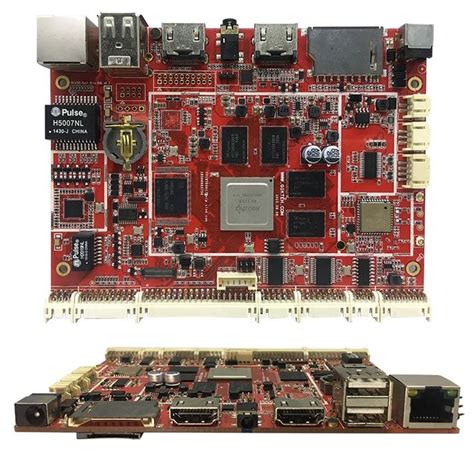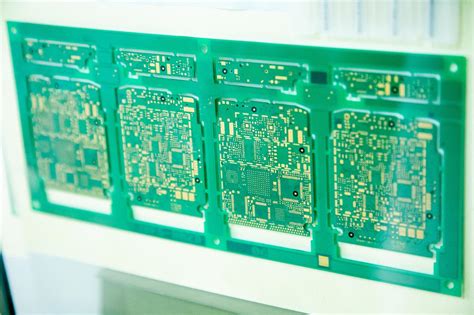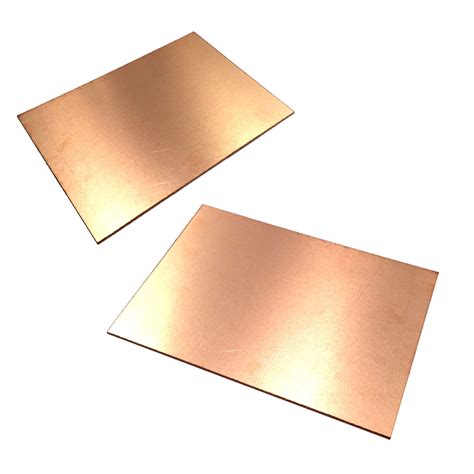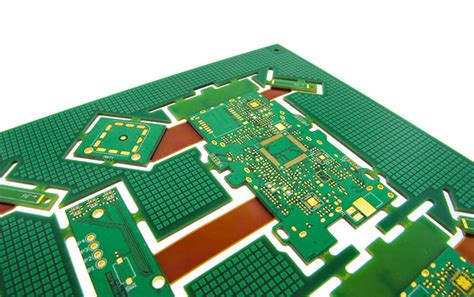Mastering Circuit Card Assembly for Innovative Electronics Design
Key Takeaways
Mastering pcb assembly entails a comprehensive understanding of various components and their integration into a cohesive design. In the world of pcba, it’s crucial to appreciate that each step of the circuit card assembly process plays a vital role in achieving a reliable final product. By employing essential techniques such as careful component placement, meticulous soldering practices, and thorough inspection processes, one can significantly enhance the efficiency and overall quality of circuit designs. Furthermore, keeping abreast of best practices allows designers to streamline production workflows and reduce errors effectively. Utilizing the right tools and materials not only affects the assembly quality but also contributes to innovative solutions in electronics design. Embracing these foundational aspects will empower creators to elevate their projects, making them more efficient and innovative. Ultimately, mastering these techniques unlocks the potential for groundbreaking advancements in electronics that can resonate throughout various industries.
Introduction to Circuit Card Assembly: A Foundation for Electronics Design
Circuit card assembly (often referred to as PCBA) is a crucial process that serves as the backbone of modern electronics design. Mastering this process not only enhances the quality of electronic devices but also accelerates innovation in the ever-evolving tech landscape. At its core, pcb assembly involves several intricate steps, starting from schematic design and layout for optimal performance to the precise placement and soldering of components. Each stage of pcba requires meticulous attention, as even minor discrepancies can lead to significant performance issues.
Understanding the principles of circuit card assembly opens the door to more innovative and efficient designs. It’s essential to recognize that effective PCBA directly impacts functionality and reliability. Thus, recognizing best practices in this domain is imperative for success. For instance, implementing systematic testing and quality control measures ensures that all assembled circuit cards adhere to necessary standards, reducing waste and minimizing time spent on troubleshooting.
“The goal of every engineer should be not just to build a product but to ensure its longevity and reliability through thoughtful assembly processes.”
Familiarity with tools and materials used in circuit card assembly further supports improvement in project outcomes. The right selection can lead to optimizations in both production time and operational efficiency. As innovation continues at a rapid pace, the synergy between traditional techniques and modern solutions will shape the future of electronics design significantly.
In conclusion, embracing effective practices within circuit card assembly lays a robust foundation for groundbreaking advancements in electronics technology, unlocking new potential for creativity and technical prowess.
Essential Techniques for Effective Circuit Card Assembly
Mastering pcb assembly requires a deep understanding of various techniques that form the backbone of effective pcba. One essential technique is proper component placement, which ensures that each element on the circuit board is positioned accurately for optimal functionality. Using automated pick-and-place machines can significantly enhance this process, allowing for precision and speed that manual methods cannot match.
Another key aspect is soldering, where techniques such as wave soldering or surface mount technology (SMT) can be employed based on the project’s requirements. Each method has its strengths; for instance, SMT allows for a compact design while wave soldering can be effective for through-hole components.
It’s crucial to also maintain cleanliness throughout the assembly process. Contamination can severely affect the performance and reliability of assembled circuits. Implementing thorough cleaning protocols post-assembly ensures that any residues from soldering or handling do not interfere with electrical connections.
Additionally, effective thermal management must be incorporated into the design stage to safeguard against overheating. This involves selecting appropriate heat sinks and thermal pads to protect sensitive components, allowing them to operate efficiently under load.
Ultimately, the success of a pcb assembly project lies in rigorous testing and inspection. Utilizing techniques such as X-ray inspection or automated optical inspection (AOI) helps identify defects early in the assembly process, preventing costly rework later on.
| Technique | Description | Benefits |
|---|---|---|
| Component Placement | Accurate positioning using automation | Increases precision and efficiency |
| Soldering | Techniques like SMT or wave soldering | Optimizes design flexibility |
| Cleanliness | Implementing cleaning protocols post-assembly | Enhances reliability |
| Thermal Management | Utilizing heat sinks and thermal pads | Protects against overheating |
| Testing & Inspection | Methods like X-ray inspection and AOI | Early defect detection |
By applying these essential techniques in circuit card assembly, designers can unlock new levels of innovation in electronics design while maintaining high-quality standards in their projects.
Best Practices to Enhance Efficiency in Circuit Card Assembly
To ensure a successful pcb assembly process, applying best practices is crucial for enhancing overall efficiency. First and foremost, it is essential to maintain a well-organized workspace. This not only minimizes distractions but also allows for a smoother workflow when handling components during pcba. Properly labeling and categorizing components can save precious time and prevent mix-ups in the assembly phase.
Another significant practice is to implement standardized operating procedures (SOPs). By developing clear and consistent protocols, team members can effectively adhere to specific steps during the assembly process, reducing the likelihood of errors and improving productivity. Regular training sessions can enhance this practice by keeping the team updated on the latest techniques and tools used in circuit card assembly.
Utilizing advanced technology such as automated pick-and-place machines can also drastically improve efficiency. These machines are designed to precisely position components on the board, decreasing assembly time while maintaining accuracy. Furthermore, investing in high-quality materials ensures reliable solder joints and robust connections, ultimately prolonging the lifespan of electronic products.
Lastly, adopting an iterative approach during testing phases helps identify potential issues early on. By consistently monitoring results and making necessary adjustments to designs or processes, teams can continuously enhance their circuit card assembly practices. This proactive mindset is essential for achieving innovative electronics design, paving the way for future advancements in technology.
Tools and Materials: Building Blocks of Innovative Electronics
In the realm of pcb assembly, the choice of tools and materials fundamentally influences the quality and efficiency of the pcba process. High-quality materials, such as FR-4 substrates, contribute significantly to the durability and performance of electronic devices. It’s essential to understand that not all solder types are created equal; for instance, lead-free solder is often preferred for its environmental benefits, yet it may require higher temperatures for effective bonding. Therefore, selecting the right soldering equipment is crucial—precision tools like a temperature-controlled soldering iron can help ensure consistent results.
Additionally, the use of proper cleaning solvents and flux aids in promoting strong electrical connections while minimizing potential defects on the circuit board. Various rework stations also play a key role by allowing for easy repairs or adjustments during the pcb assembly process. For complex designs featuring densely packed components, leveraging automated assembly systems can significantly enhance efficiency yet demands a careful selection of compatible materials suited to high-speed production.
Understanding these aspects not only elevates your projects but also paves the way for innovative electronics design by ensuring a reliable foundation built on thoughtful material choices and effective tooling mechanisms. By integrating these best practices, you can elevate your designs and minimize potential setbacks in your journey through pcba mastery.
Troubleshooting Common Issues in Circuit Card Assembly
In the complex world of pcb assembly and pcba, encountering issues during the assembly process is not uncommon. Understanding how to effectively troubleshoot these problems can significantly enhance the success of your electronics projects. One common issue is misalignment of components, which can lead to improper connections. This often occurs due to inaccurate placement during the assembly process. Employing precision tools for positioning can mitigate this risk. Another frequent stumbling block is insufficient solder, which may result in weak connections. To tackle this, ensuring that soldering techniques are both adequate and consistent is essential.
Moreover, contamination on circuit boards can lead to functionality problems. Keeping workspaces clean and using high-quality materials during the circuit card assembly can help combat contamination issues. Signal integrity is also a critical consideration; for instance, poor routing of traces can cause interference or signal loss. Regularly reviewing design specifications and adhering to best practices are crucial steps to maintaining optimal performance in your designs.
Ultimately, addressing these troubleshooting areas not only remedies immediate complications but also supports a broader understanding of efficient pcba processes. This enhances overall project quality and paves the way for innovative outcomes in electronics design.
Case Studies: Successful Circuit Card Assembly in Action
Examining real-world applications of pcb assembly reveals remarkable insights into the diverse approaches and methodologies adopted by professionals in the field. One notable case involved a tech startup that integrated advanced automation in their pcba process, significantly reducing production time while ensuring accuracy. Through rigorous testing phases and iterative design modifications, they managed to enhance their product offerings. Another example stemmed from an established manufacturer that focused on sustainability; by utilizing eco-friendly materials and energy-efficient practices, they not only improved their assembly efficiency but also contributed positively to the environment. These success stories underscore the importance of continuous improvement and innovation in circuit card assembly. They highlight how embracing new technologies and methods can lead to superior quality and customer satisfaction, ultimately elevating the standards of electronics design across various industries. Insights gained from these case studies reinforce that the future of pcb assembly will heavily rely on adaptability and creative solutions tailored to meet evolving market demands.
Future Trends in Circuit Card Assembly and Electronics Design
The landscape of pcb assembly and electronics design is continually evolving, influenced by advancements in technology and shifting market demands. One of the most significant trends is the integration of smart technologies into pcba processes, allowing for automation and increased precision in assembly. This shift towards automation not only enhances efficiency but also reduces the margin for error, leading to higher overall product quality. Furthermore, the rise of multilayer PCBs has made it essential for designers and manufacturers to innovate in their design approaches, ensuring optimal functionality within limited space. Sustainable practices are also gaining momentum, with a focus on using environmentally friendly materials and processes. This shift towards sustainability reflects a growing concern for ecological impact in the electronics industry. Additionally, advancements in software tools enable designers to simulate various aspects of circuit card assembly, facilitating earlier detection of potential issues and significantly shortening development cycles. As these trends continue to shape the future of pcb assembly, embracing such innovations will be crucial for organizations aiming to remain competitive in an increasingly dynamic market.
Conclusion
In the ever-evolving world of electronics design, mastering circuit card assembly (often referred to as pcb assembly or pcba) is pivotal for creating innovative and efficient solutions. As we have explored throughout this article, understanding the fundamentals of circuit card assembly equips designers with the skills needed to tackle increasingly complex projects. Employing essential techniques and implementing best practices can significantly boost both productivity and outcome quality. By investing the time to familiarize oneself with the right tools and materials, creators can streamline their processes and troubleshoot common issues with greater ease. Looking ahead, it’s clear that advancements in technology will continually shape the landscape of pcba, urging professionals to stay updated with new methods and trends. This journey toward excellence in circuit card assembly not only enhances individual projects but also contributes positively to the broader field of electronics design, paving the way for future innovations.
FAQs
What is circuit card assembly (CCA)?
Circuit card assembly (CCA) refers to the process of assembling electronic components onto a printed circuit board (PCB) to form a functional unit. This involves techniques such as soldering, component placement, and routing the connections between components on the PCB.
What are the key benefits of mastering PCBA?
Mastering PCBA leads to enhanced productivity and improved product reliability. By acquiring essential skills in circuit card assembly, you can streamline your processes, minimize errors, and ultimately deliver high-quality electronic designs that meet market demands.
What tools are necessary for efficient PCB assembly?
The essential tools for effective PCB assembly include soldering iron, tweezers, multimeters, and specialized fixtures. Additionally, having access to a well-ventilated workspace is important for safety during the soldering process.
How can I troubleshoot common issues in circuit card assembly?
Common issues like component misalignment or incomplete solder joints can be troubleshot by closely inspecting your work under magnification. Developing a systematic approach to check each connection and assembling steps can significantly reduce errors during pcb assembly.
Are there any trends shaping the future of circuit card assembly?
Yes! Innovations like automation and advanced testing technologies are shaping the future of pcb assembly. These trends are fostering higher efficiency and accuracy in electronics design, pushing the boundaries of what can be achieved in this evolving field.






